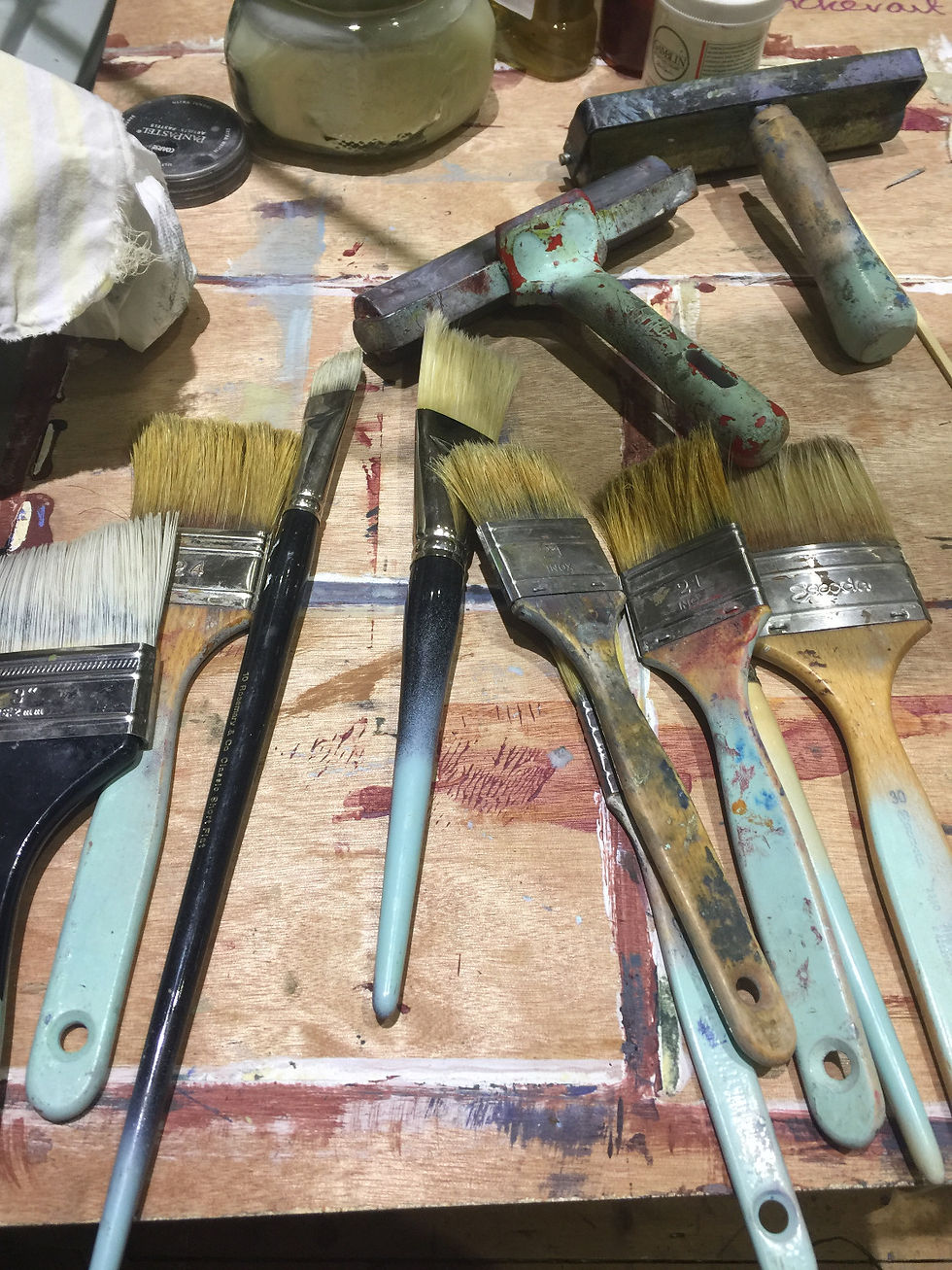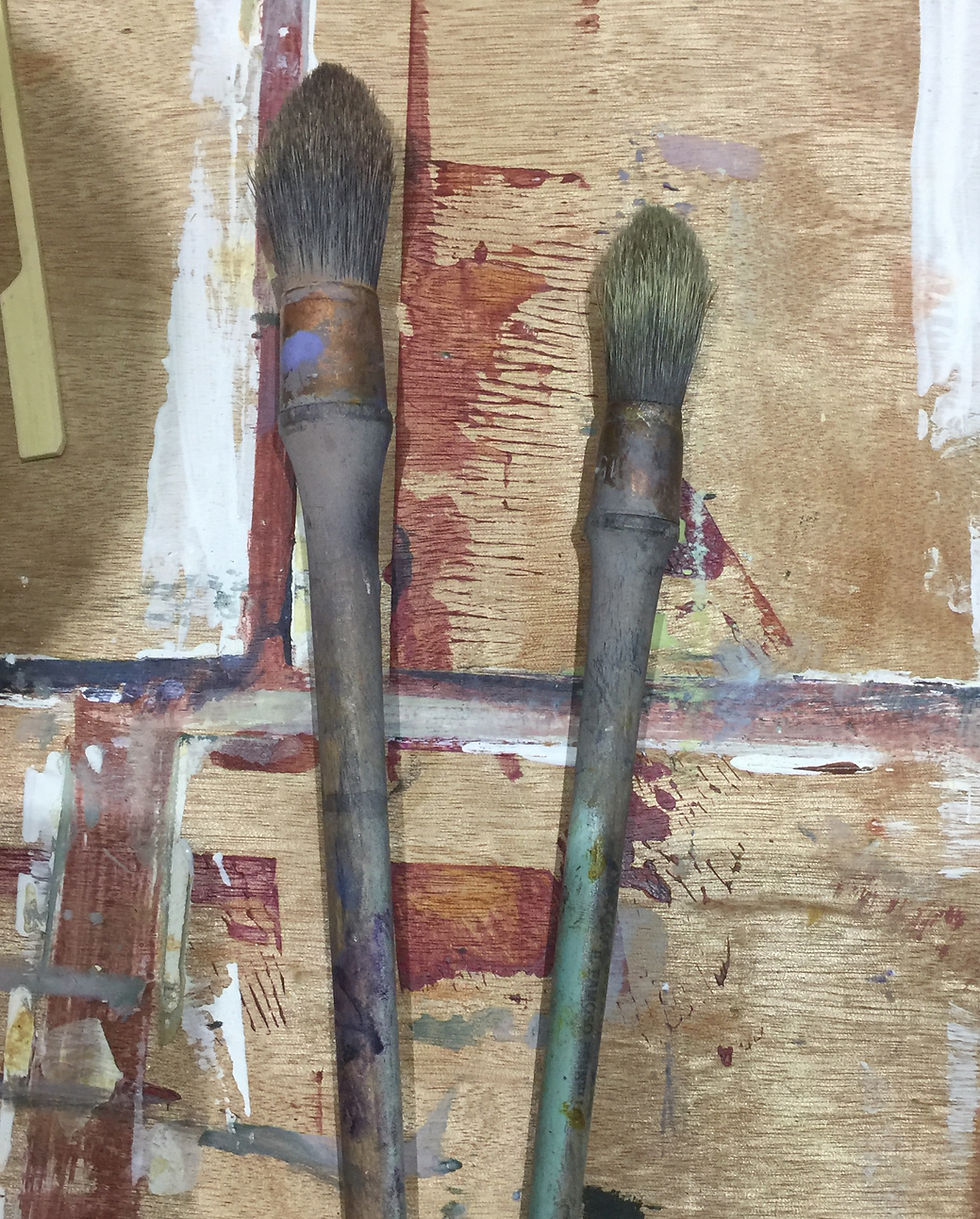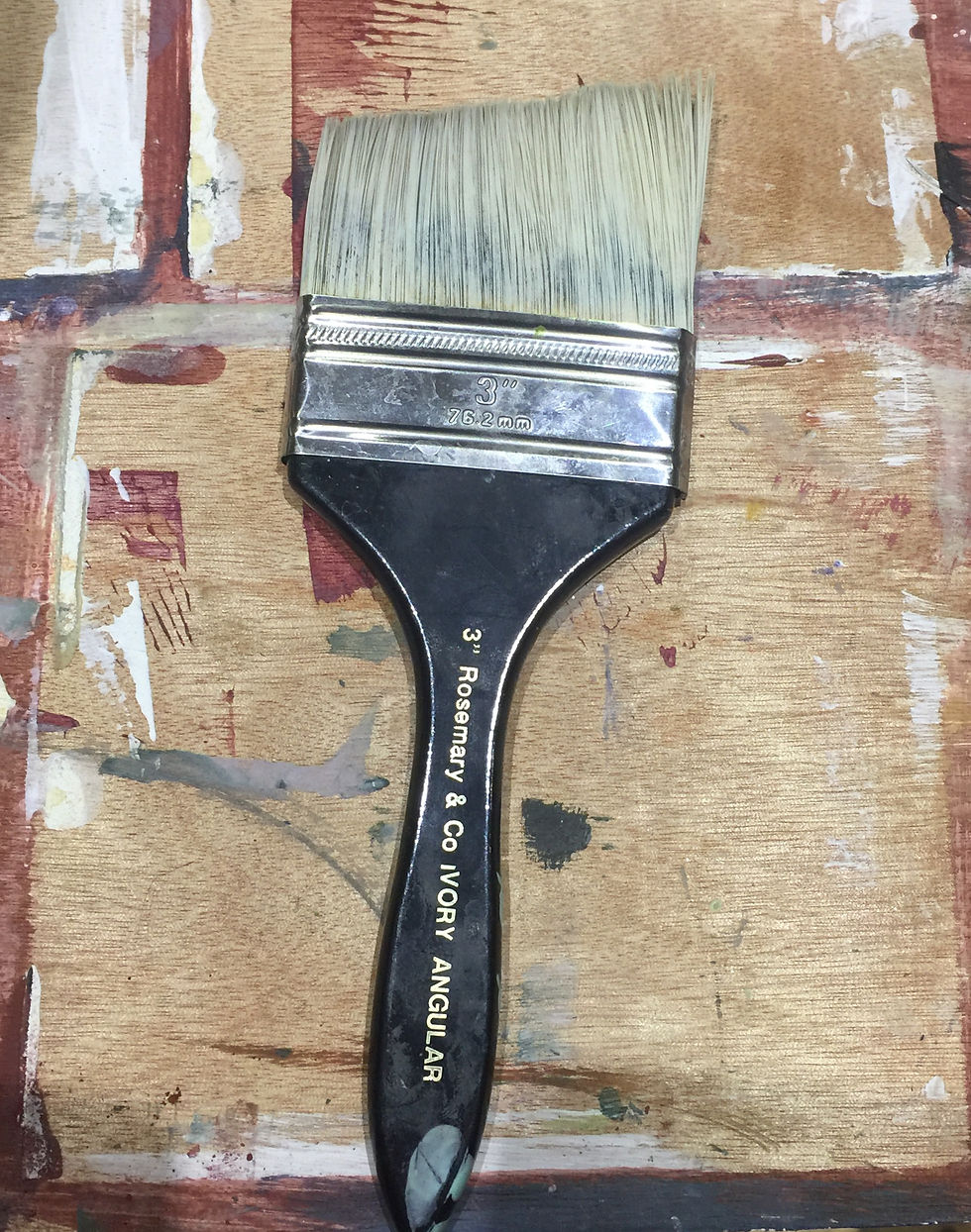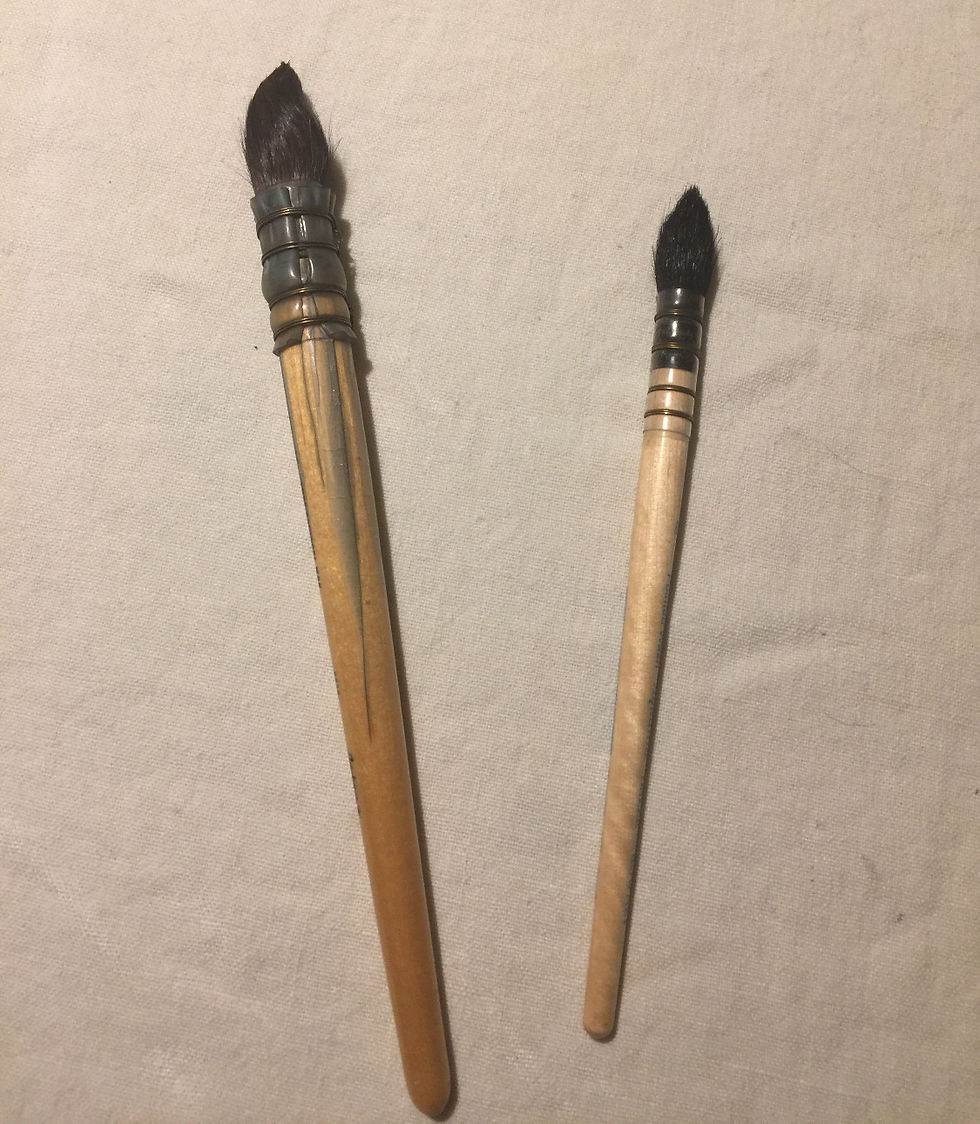
Hi Guys,
This is a post devoted to different brushes the marks they make and how to look after them. Over the years I have found two makes of brushes that I love to use in my practise, these are Rosemarys brushes and Escoda brushes. Both are particularly hard wearing.
Below is an image that I m sure you may find helpful it shows the marks possible and there corresponding brush shape.

Below are possibly my favourite shaped brushes a series of different sized hog hair flats.Used with oils or acrylics. Flats can come in a long length, standard or short, these are known as Brights.

Below are a series of filberts and riggers great for detail made by Rosemarys.Used with oils or acrylics.

Above are copper collared bristle brushes that can be used for acrylic or oil. Below are round bristle domes by Bob Ross, these are fab for dry brushing, blending soft edges. Used with oil or Acrylic.

Below are a collection of knife tools great for no mess painting and mixing. Used with oils.


A super large Rosemary brush cut on a slant,often called a dagger, I really enjoy painting with this the marks I am able to get with it are really versatile. Used with oils or acrylics.

Above are various squeegee tools. These are fab for applying layers of paint especially when texture medium has been added.Used with oils or acrylics.
Below are soft synthetic watercolour brushes. these are only used for this medium as they are soft.

Lastly my watercolour mops are my absolute favorite and again not used with any other paint. I hope this helps my students this week choosing their brushes over half term.

Cleaning Guide for Brushes.
When painting with oils one uses many brushes and cleans up at the end of the painting session. Have a good supply of cotton rag to wipe off excess paint from the brush[ this could also be done with paper towel]. Run a generous amount of Murphys wood soap or Turpenoid throughout the brush paying attention to the ferrule and the well in the centre of the brush. After doing this with each brush put them all into hot water with a little washing up liquid. Once the oil paint is removed lay a clean cotton rag on the side and brush away excess water whilst reshaping the brush.
Every now and then run a little hair conditioner through the brushes to restore their flexibility.
When painting with Acrylic paint get yourself into the habit of returning your brush to the water because Acrylic paint drys quickly and the polymer in the paint will bond the fibres of the brush together resulting in you needing a new brush. Once you have finished your painting session its good practise to give your brushes a wash in hot soapy water. Once clean and drained place a clean cotton rag on the side and run the brush back and forward removing any water left over and reshaping the brush.
Should you be using synthetic brushes for acrylic and the fibres loose their shape these can be restored by placing them into boiling water for a short time and then reshape after.
When painting in Watercolour your brushes can simply be washed through with clean warm water and every now and then hot soapy water followed by a little hair conditioner to bring back their softness and flexibility.
When cleaning tools like knives,squeegees and rollers aim to wipe clean as you go to avoid a build up and texture on the tool especially when using Acrylic and texturising mediums.
I hope this makes things clearer and this is just a guide, each artist has their preferred way of doing things.
Enjoy your painting, I ll post again soon.

